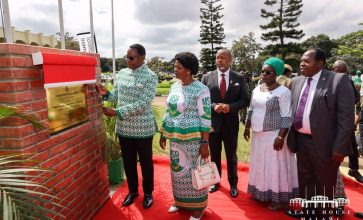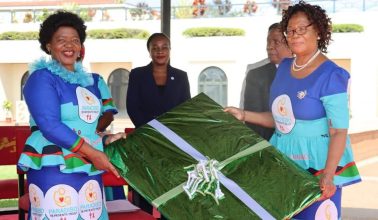The search for tobacco replacement continues
During the launch of the December 2023 issue of the Malawi Country Economic Memorandum at Bingu International Convention Centre in Lilongwe, Minister of Trade and Industry Sosten Gwengwe spoke at length about the need to diversify trade to maximise Malawi’s trade potential.
He said: “If we are serious about economic growth, we have to invest in production. We need to have multiple sources of income and continue investing in manufacturing and other agricultural products in the country.”

It was an acknowledgement that the country’s dependence on tobacco, the golden leaf or green gold, has left the country exposed and prone to trade imbalances. However, the minister seemed to be at a loss for a viable alternative to replace tobacco.
Tobacco has been the mainstay of the local economy, contributing 22 percent of the national gross domestic product and accounting for between 40 and 55 percent of total export earnings depending on the season and the leaf’s performance on the international market.
However, tobacco’s contribution to the local economy has waned in recent years as a result of the World Health Organisation (WHO) Framework Convention of Tobacco Control (FCTC), a measure put in place to reduce smoking and protect people from the negative effects of smoking.
Malawi is a signatory to the framework and its ratification of the same came into effect on November 26 2023. Nonetheless, the country’s dependence on the golden leaf still remains.
This year alone, Malawi raked in $283.8 million from the sale of more than 120 million kilogrammes of tobacco, at least $100 million more than the $182.1 million earned in 2022. This represents about 42.7 percent of the total exports accrued in 2023.
To put it in context, tobacco outsells the next two products tracked by the Reserve Bank of Malawi (RBM), namely tea ($60.7 million) and sugar ($27.6 million).
As a result of dwindling tobacco sales, the country has been searching for alternative value chains to diversify the economy and reduce the country’s dependence on tobacco.
Local think-tank Mwapata Institute in collaboration with the International Food Policy Research Institute (Ifpri), the Bureau for Food and Agricultural Policy (BFAP) and the Alliance for Green Revolution in Africa (Agra) conducted a research on the viability of value chains.
The researchers assessed the potential of the value chains based on five criteria, namely future potential and competitiveness, the ability to contribute to economic growth beyond the farm gate and improve diet quality, and the capacity to create jobs in the agri-food system and reduce poverty.
Based on that assessment, the study titled Prioritising Policies for Driving Inclusive Agricultural Transformation in Malawi: Value Chain Selection, found that mangoes, macadamia, bananas and soya beans were the value chains with the highest potential for commercialisation.
Maize, the country’s staple food, ranked 16th out of 17 value chains analysed.
Malawi’s development partners, including the British Foreign, Commonwealth and Development Office (FCDO) and the United States Agency for International Development (USAid) have been investing in developing non-traditional agricultural value chains such as soya beans, macadamia and groundnuts.
In September 2023, USAid and Malawian registered company Pyxus announced they would jointly invest $44.6 million—$14.6 million from Pyxus and $30 million from USAid to boost groundnut value chain productivity.
The financial package will be used to increase the availability of high-quality groundnut seed, boost groundnut production and processing and support the livelihoods of smallholder farmers.
A month later, the UK would announce a £10 million project to boost the production of mangoes, macadamia nuts and mining.
Speaking at the launch of the Malawi Vulnerability Assessment Committee project, FCDO senior economist Nick Lea said: “Developing new high-value agricultural exports and building an industrial base around them is key to Malawi’s prosperity and the creation of jobs across multiple sectors of the economy to benefit from its agricultural potential.”
According to figures from the World Bank, soya beans have risen to be the second top exporter in the last two years.
As of 2021, exports of soya increased from a paltry $500 000 in 2013 to about $133 million. In that year, soya outperformed traditional exports such as sugar. However, the exports were only 30 percent of tobacco earnings.
In comparison, sugar and tea accounted for 17 and 16 percent of tobacco exports, respectively.
There is a lot of promise in soya beans, but the search for replacement will probably continue in 2024.






One Comment